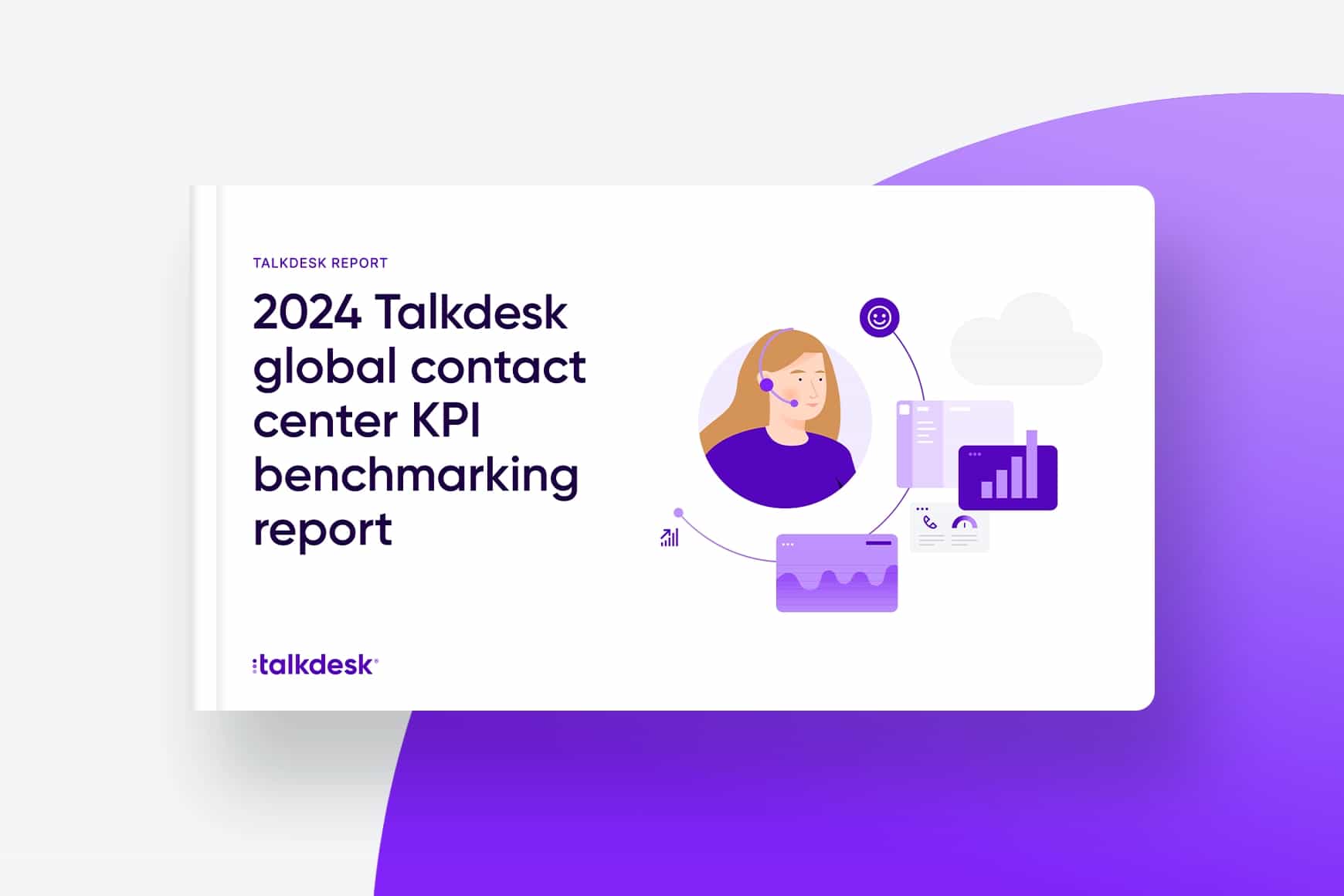11 ways to improve customer experience (CX)

By Celia Cerdeira
0 min read

Improving customer experience (CX) isn’t just about making customers happy; it’s a proven business accelerator.
Customer experience weaves through every aspect of a business’s offering, shaping customer perceptions and driving loyalty. From the insightful process of customer journey mapping, which provides a deep dive into customer interactions and touchpoints, to creating a customer-first culture within contact centers, every strategy aims at one goal: elevating the customer’s journey to exceptional heights.
A great customer experience strategy drives higher retention, reduces churn, boosts customer lifetime value (CLV), and lowers acquisition costs thanks to word-of-mouth. Businesses that lead in customer experience also tend to outperform their competitors’ growth and profitability. In fact, businesses that excel in CX achieved 190% higher three-year revenue growth compared to their peers.
In this article, we’ll explore 11 actionable ways to improve customer experience by shifting from transactions to relationships that build lasting trust.
What is customer experience?
Customer experience (CX) is the holistic impression an organization leaves on its customers, shaped by every interaction across the entire relationship lifecycle. It includes direct touchpoints—like onboarding, support, or product use—as well as indirect signals such as brand perception, communication style, and the ease or difficulty of getting things done.
More than just a series of moments, CX is also about how people feel when they engage with an organization: Is it intuitive? Respectful? Empowering? Frustrating? Whether someone is signing up for a service, requesting technical help, attending a training session, or simply reading an email, each interaction contributes to their overall judgment of the organization.
A positive CX translates to a seamless, personalized, and memorable experience that resonates with customers. When businesses prioritize CX, they not only meet customer expectations but often exceed them, fostering deeper loyalty.
11 ways to improve customer experience.
Improving customer experience starts with understanding what customers want, then delivering consistently at every part of their journey. Here are 11 ways to do just that.
1. Map the customer journey to better understand buyer needs.
Understanding customer interactions is vital for businesses that aim to deliver exceptional customer service. Each interaction is an opportunity to either strengthen customer relationships or push them away. By analyzing customer engagement across touchpoints—from initial contact to continued support—organizations can uncover opportunities to enhance the overall experience.
Customer journey mapping is more than a tool; it’s a strategic asset, a powerful technique to gain insights into customer touchpoints. It involves creating a visual representation of every stage and interaction in the customer lifecycle, which allows businesses to track the customer’s experience from start to finish.
Through mapping, companies can visualize the customer’s path, note where they are delighted or face obstacles, and understand the context behind their behaviors. This strategic visualization aids in pinpointing critical moments where targeted actions can optimize the customer experience. By regularly updating the journey map with new data and customer feedback, businesses ensure that their strategies remain aligned with customer needs, helping to cultivate an environment of continuous improvement.
2. Embrace an omnichannel customer experience.
In today’s interconnected world, providing omnichannel support is no longer a luxury; it’s a necessity to optimize customer experience and nurture loyalty. Implementing an omnichannel support solution means customers can seamlessly transition between communication channels—be it social media, email, voice, chat, or others—without any disruption in service or quality. This strategy ensures that the context of customer inquiries is retained across channels, delivering a cohesive experience that acknowledges their preferences and history with the business.
Seamless omnichannel experiences empower customers with the flexibility to choose their preferred mode of interaction, fostering a sense of control and personalization. By offering a unified customer service front, businesses show that they value their customers’ time and convenience, which translates to increased customer satisfaction and loyalty. An omnichannel approach also paves the way for collecting comprehensive customer insights, enabling businesses to fine-tune services and anticipate needs.
3. Take time to understand your customers.
A great customer experience starts with a deep understanding of who the customers are—what they value, what frustrates them, and what keeps them coming back. Businesses that take the time to truly know their customers are far better equipped to meet and exceed their expectations.
One of the most effective ways to build this understanding is by analyzing customer experience metrics. These data points offer a window into how people feel at different stages of their journey. Among the most powerful tools is sentiment analysis, which uses AI to scan interactions like emails, chat transcripts, or calls to detect the emotional tone behind the words. It helps surface what customers may not say directly, like underlying frustration or delight, and provides a clearer view of intent.
Customer feedback surveys are another vital tool, but their impact depends on how thoughtfully they’re designed. Rather than relying solely on generic ratings, the most useful surveys ask meaningful, open-ended questions that invite customers to share their real thoughts, such as:
-
What nearly stopped you from completing your purchase?
-
What could we have done better today?
-
What stood out to you in a positive way?
Keeping surveys short and focused—ideally under five minutes—also increases completion rates. When businesses follow up on that feedback or make visible changes, they build trust and show customers that their voices matter.
4. Route customers straight to the agent best suited for their inquiry.
Few things frustrate customers more than having to repeat themselves to multiple agents. When someone reaches out with a problem or question, they expect to be connected quickly to someone who can help, without bouncing around departments or re-explaining their issue.
Intelligent routing is the process of matching a customer with the most appropriate agent or resource based on their specific need, channel, and context. Instead of relying on static call queues or generic routing rules, intelligent systems use real-time data—like a customer’s past interactions, purchase history, or sentiment—to make smarter, faster decisions about where to send the inquiry.
AI-powered routing takes this a step further by continuously learning and adapting. These systems can evaluate the urgency and nature of a customer’s message, whether it comes in via voice, chat, or another digital channel, and instantly route it to the best-fit agent. For example, a high-value customer expressing frustration might be escalated to a senior agent immediately, while a technical question could be routed to someone with specialized product knowledge.
5. Automate easy-to-handle customer outreach.
Customers don’t always want to talk to an agent, especially when their question is simple. Whether it’s checking an order status, updating an account detail, or getting quick product info, people increasingly expect fast, hassle-free answers. Empowering them to find those answers on their own is a smart way to improve the experience without adding strain to support teams.
AI-powered self-service options, like chatbots, can handle routine inquiries around the clock, offering instant responses across channels. They use natural language processing (NLP) to understand what customers are asking, and machine learning to improve over time, so they can resolve common questions without escalation.
The benefit for customers is speed and convenience. They get the help they need in seconds, without waiting on hold or navigating a phone tree. For businesses, it frees up human agents to focus on more complex or sensitive issues, improving both efficiency and overall satisfaction.
6. Track the right customer experience KPIs.
Companies can’t fix what they can’t see, so identifying and tracking the right customer experience KPIs is essential for spotting trends, uncovering pain points, and understanding what’s working. Once those metrics are in place, the real value comes from analyzing them regularly and turning insights into action.
Some of the most important CX metrics to track include:
-
Customer satisfaction score (CSAT). Measures how satisfied customers are with a specific interaction. It is often collected immediately after a service or support experience.
-
Customer effort score (CES). Tracks how easy it was for a customer to complete an action, such as resolving an issue or finding information.
-
Customer service level (CSL). Evaluates the percentage of customer inquiries answered within a set timeframe, helping gauge responsiveness.
-
Customer lifetime value (CLV). Estimates the total revenue a business can expect from a customer over the duration of the relationship.
Many businesses also look to net promoter score (NPS) to understand how likely customers are to recommend their brand to others. While not a standalone measure of CX, NPS can signal shifts in customer sentiment and loyalty.

Talkdesk Report
Talkdesk 2024 KPI benchmarking report for contact centers
Get a snapshot of your contact center’s performance in the age of agentic AI, see how it compares to industry peers, and discover tips for optimization.
7. Give employees the tools they need.
To improve customer loyalty and experience, equipping agents with the right tools is essential for efficiently resolving customer issues at scale. A unified agent workspace and a single pane of glass simplifies this by providing all the necessary information and resources in one place. Additionally, AI agent assistant tools, like Talkdesk Copilot, can actively listen, guide, and support agents in real time during customer interactions, helping them resolve issues faster and reduce average handle time (AHT).
By proactively suggesting the next best action at each stage of the conversation, AI empowers agents to deliver faster, more effective support. After the interaction, the AI assistant can instantly summarize the conversation, eliminating the need for time-consuming after-call work.
8. Use quality assurance software to analyze agent performance.
Delivering a strong customer experience depends heavily on the performance of frontline agents. However, without visibility into how those agents are doing, it’s difficult to know what’s working or where improvements are needed.
Contact center quality assurance (QA) software allows businesses to monitor, evaluate, and score agent interactions across channels. It captures key data points from calls, chats, emails, and other touchpoints to help identify trends, flag inconsistencies, and ensure that service standards are being met. More importantly, it provides a consistent, objective framework for evaluating performance, so feedback is grounded in data, not guesswork.
Beyond compliance and consistency, QA software is a powerful tool for agent coaching and development. It gives managers the insight needed to deliver targeted, personalized training that helps agents grow in the areas that matter most—whether that’s communication skills, product knowledge, or handling complex issues more efficiently.
9. Enhance agent knowledge with AI-powered training.
Well-trained agents are the foundation of a strong customer experience. However, traditional training methods often fall short, lacking the speed, personalization, and adaptability needed to keep agents prepared.
AI accelerates onboarding and makes training smarter and more dynamic. By analyzing historical interactions, customer feedback, and support trends, AI can pinpoint the areas where agents need improvement and automatically generate personalized training paths. Rather than generic refreshers, agents receive targeted coaching that addresses their specific knowledge gaps or behavioral patterns, improving performance without pulling them away from the floor for long periods.
10. Create a customer-first culture.
Fostering a customer-first culture meets customers where they are and gives them the service they expect and deserve. When every team member is attuned to the customer’s voice across all platforms, the message is clear: the customer’s needs come first.
Encouraging this mindset involves not just training and awareness but also tangible incentives for employees who prioritize customer satisfaction. Recognition programs, rewards for positive customer feedback, and performance metrics aligned with customer happiness can motivate staff to go above and beyond. By championing a culture that places the customer at the heart of all operations, businesses can create enduring customer relationships and brand loyalty.
11. Personalize every customer interaction possible.
Customers want to feel known, understood, and valued. Companies that continue to rely on generic messages or one-size-fits-all experiences risk falling behind. When a business recognizes a returning customer, remembers their preferences, or anticipates their needs, it creates a sense of connection that sets the business apart. Whether it’s tailoring product recommendations, adjusting communication styles, or offering proactive support, every personalized interaction adds up.
AI makes this level of personalization scalable. By analyzing customer behavior, purchase history, and real-time signals, AI-powered systems can dynamically adapt experiences across touchpoints, offering timely, relevant interactions that feel human, not robotic.
BONUS: Improve the quality of your customer service.
While customer experience encompasses the full journey a customer has with a business, customer service is a critical moment within that journey, often where impressions are cemented. The two are closely connected: poor service can derail an otherwise strong experience, while great service can rescue one that’s gone off track.
Improving customer service is one of the fastest ways to elevate the broader customer experience. It means empowering agents with the right tools, training, and autonomy to resolve issues efficiently and empathetically. It also means creating a culture that prioritizes active listening, clear communication, and accountability.
Customers don’t separate their interactions into silos. A helpful, respectful service experience can restore trust, strengthen loyalty, and turn a frustrated customer into a lifelong fan. In that way, customer service is more than a support function—it’s a frontline driver of customer experience success.
Why do companies need to improve customer experience?
In an era where products and services are increasingly commoditized, the way a business interacts with its customers often serves as the primary differentiator. Here’s why improving customer experience is a must:
-
It drives customer loyalty. Customers who feel valued and understood are more likely to return and less likely to churn.
-
It boosts revenue. Positive experiences lead to higher spending, longer customer lifecycles, and increased customer lifetime value.
-
It fuels brand advocacy. Happy customers become promoters, sharing their experiences and influencing others to engage.
-
It increases resilience. Companies with strong CX foundations are better equipped to navigate change and maintain customer trust.
-
It reduces churn. Identifying friction points and addressing them quickly can prevent frustration from turning into lost business.
-
It supports employee satisfaction. Happier customers often lead to less stressful interactions, boosting morale and retention among frontline staff.
In fact, 88% of customers say they’re more likely to make another purchase after a positive customer experience—clear proof that great CX directly drives repeat business.
Improve your customer experience with AI from Talkdesk.
Exceptional customer experience doesn’t happen by accident; it’s built through smarter tools, deeper insights, and a commitment to meeting customers where they are. Talkdesk helps businesses do exactly that, with AI-powered solutions that personalize interactions, streamline support, and empower agents in real time.
For example, BankUnited, a national bank based in Miami Lakes, Florida, transformed its customer service operations with Talkdesk Financial Services Experience Cloud, leveraging solutions like Talkdesk Autopilot, Copilot, and Interaction Analytics. As a result, the bank significantly reduced abandonment rates, increased containment in the IVR by 15–20%, and 104% increase in net promoter score (NPS) and customer satisfaction.
Another great example is Evara Health, a federally qualified health center (FQHC). Talkdesk Autopilot now handles 45% of call volume through automation. This allows agents to focus on more complex issues, reducing average handle time (AHT) and improving care quality. Patients who previously waited up to an hour now experience significantly shorter wait times, leading to a nearly 120% boost in accessibility and satisfaction.
Ready to elevate your customer experience with AI? Discover the power of the Talkdesk agentic AI contact center platform.
Customer experience FAQs.
Check out the answers to the most common questions about improving customer experience.
Customer experience (CX) is the overall perception a customer has of a brand based on every interaction across marketing, sales, support, and beyond. It reflects how customers feel throughout their journey and plays a major role in shaping loyalty and trust.
Companies can improve CX by understanding customer needs, routing inquiries intelligently, empowering agents with AI, automating routine support, personalizing interactions, and continuously analyzing key performance metrics to identify and act on areas for improvement.
Customer expectations are always evolving, and businesses that consistently improve CX are better positioned to build loyalty, reduce churn, and outperform competitors. Ongoing investment in CX ensures companies remain responsive, relevant, and resilient.
A customer journey is the complete set of experiences a customer goes through when interacting with a brand, from initial awareness to continued support. Mapping this journey helps companies identify key touchpoints and optimize each one for better outcomes.
Customer experience management (CXM) is the strategy and process of designing, monitoring, and optimizing all interactions a customer has with a brand. It involves collecting feedback, analyzing data, and making improvements that align with customer needs and business goals.
Customer service is a component of customer experience, focused on specific interactions where support is needed. CX, on the other hand, is the broader, end-to-end perception shaped by all brand interactions, not just support moments.
Key customer experience trends include the rise of AI-powered personalization, real-time sentiment analysis, predictive customer behavior insights, and the growing use of agent-assist tools that elevate service speed and quality.







